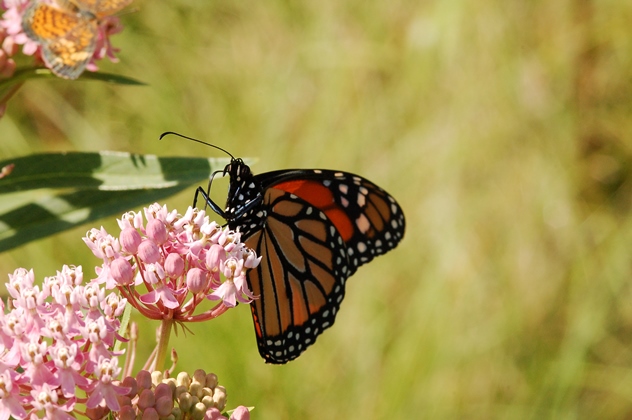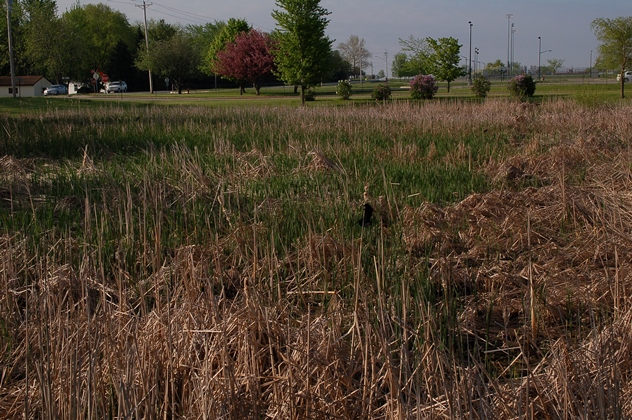Some fairly recent changes in building codes and storm water regulation present what I consider to be some pretty good opportunities for butterfly conservation.
Storm water detention basins are engineered structures, designed to detain water from heavy rains for a short period of time, then release it to the surface water. Some are designed to completely dry out, and some will still retain water for a period of time. Essentially they mimic, at least in theory, some of the hydraulic functions of wetlands.
Some are designed with biology in mind—rain gardens, where wetland vegetation is planted and intended to function in a somewhat natural setting. Most seemed designed to meet the engineering criteria with little thought to biological function. It seems to me that most require some maintenance after construction but that the maintenance is left up to the owner of the structure. It also seems they don’t lend themselves to easy maintenance—they are likely difficult to mow, and if not mowed they can be quite weedy looking.
I think a lot of the detention basins could be managed or retrofitted to benefit butterflies—they would serve as butterfly nurseries or butterfly gardens. This would require work. Volunteers could advocate for butterflies, and assist the owners by advising them on planting (or conducting the planting themselves), inspecting the functionality of the storm water detention basin, and conducting butterfly surveys before and after any management changes.
The wet/dry conditions of the detention basins could be ideal growing conditions for plants like this swamp milkweed, or a number of wildflowers, sedges, and grasses that can be either nectar sources or caterpillar host plants.
I took photos of a number of storm water detention structures in Grimes, Iowa, just to get an idea of how many of them are currently managed. This is in no way intended to be a criticism of the way any of them are currently managed, but it is intended look at what may be opportunities for changes that could help butterflies.
This is in front of the Dallas Center Grimes Meadows Middle School. It is a pretty new structure. I am not sure what type of management is planned. Would this make a good place for a pilot study?
This is near the elementary school in Grimes. There is a near monoculture of cattails, and it is good habitat for red-winged blackbirds. I suspect that this would be better butterfly habitat if it had better plant diversity.
With all the cattail growth, I wonder if the structure is functioning as designed.
South of the Casey’s General Store is a small structure is mowed to about the length of a typical yard.
McDonald’s has a similar-sized structure with cattails and crown vetch.
The Super WalMart has a large structure–this is only part of it. It seems to include some structures that physically remove debris and would require regular maintenance. I would guess that the area with the mowed grass would likely support taller wet prairie plants that would be better for butterflies than what is there now.
So are there opportunities here?








Harlan, great thoughts here. I will share this with my social media connections. You raise great questions.
I hope you can mobilise enough folk to help you create your butterfly habitats, it’s a really good plan. Good luck!